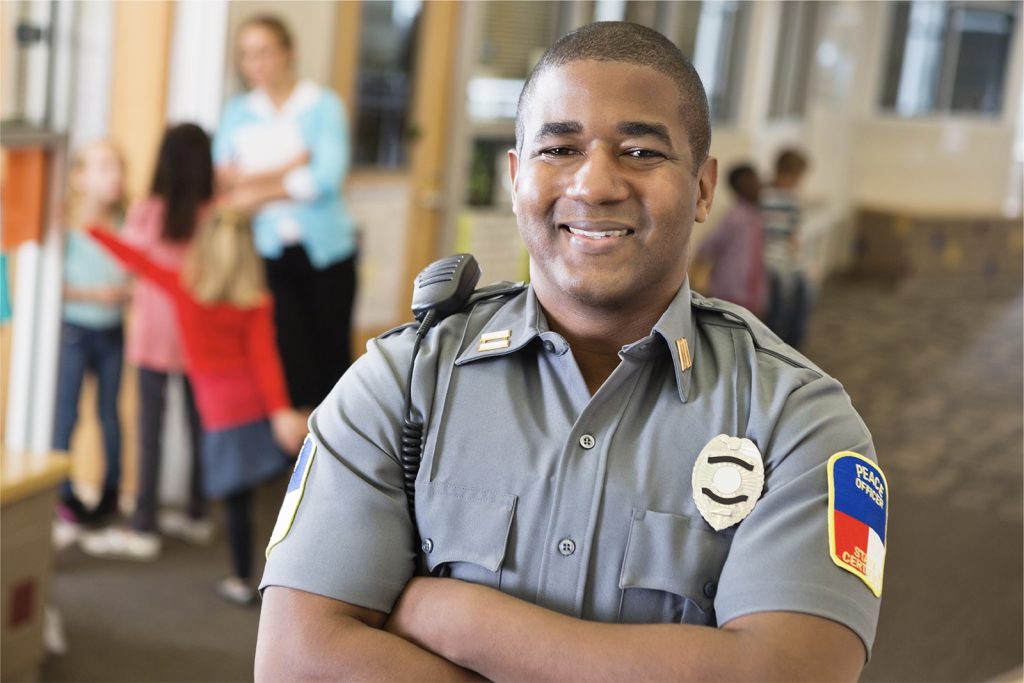In the event of a crisis or emergency situation, it is important for schools of any size to have a plan in place to ensure the safe and efficient reunification of students with their families. This process, known as school emergency reunification, is an integral part of a school’s emergency response plan, aimed at ensuring the well-being and protection of students while minimizing confusion and chaos as much as possible.
In this article we will cover the most important aspects to understand with school emergency reunification:
- What is School Emergency Reunification?
- What is the Standard Reunification Method?
- What is the Purpose of the Standard Reunification Method?
- When would you use an emergency reunification plan?
- Why is Emergency Reunification Important?
- Common challenges of school emergency reunification
- What are the best practices of emergency reunification?
- What tools do you need for emergency reunification?

What is School Emergency Reunification?
School emergency reunification is a protocol followed by schools in the event of an emergency such as a natural disaster, active shooter situation, or evacuation. The process involves the safe and secure transfer of students from the school to their parents or guardians.
The goals of emergency reunification are to provide a sense of safety and security for students and their families, reduce anxiety and stress, and maintain order and control in the aftermath of an emergency.
What is the Standard Reunification Method?
The Standard Reunification Method (SRM) was created and established by the ‘I Love You Guys’ Foundation, a foundation that works hand-in-hand with school administrators, psychologists, public space safety experts, families, and first responders, to create programs for school and community safety that are research and experience-based.
They are used in more than 30,000 schools, districts, departments, agencies, organizations, and municipalities around the world. Their SRM is considered by the industry as the “Gold Standard” and is a widely recognized protocol that schools can use to reunite students with their families in the event of a crisis or emergency.
What is the Purpose of the Standard Reunification Method?
The purpose of the standard reunification method is to ensure that the reunification process is efficient, orderly, and secure.
The standard reunification method includes several key components, including the…
- Identification of a reunification site
- Establishment of clear communication channels
- Use of secure student identification procedures.
This method is designed to be flexible and adaptable to different emergency scenarios, so that schools can effectively respond to any type of crisis or emergency situation. It is also designed to be scalable, so that schools can accommodate a large number of students and families in the event of a widespread crisis or emergency.

When would you use an emergency reunification plan?
An emergency reunification plan is used in the event of a crisis or emergency that affects the safety and well-being of students at a school. Some examples of situations in which an emergency reunification plan may be activated include:
- Natural disasters such as earthquakes, hurricanes, blizzards or tornados
- Health emergencies such as a disease outbreak or hazardous materials spill
- School evacuations for incidents related to a fire, gas leak or water main break
- Transportation emergencies, such as a school bus accident
- Active shooter incidents or other similar on-campus threats
These are just a few of the most common reasons an emergency reunification plan would be enacted, but is not an exhaustive list. A reunification plan can really be enacted anytime there is an altered dismissal regardless of the reason.
Why is Emergency Reunification important?
How is having an emergency reunification plan in place beneficial? Here are just a few of the main reasons:
- Provides a sense of safety and security during high times of high level of anxiety and stress
- Maintains order and control which minimizes the risk for additional stress, harm or injury
- Enables first responders, such as police and emergency medical personnel, to focus on resolving the crisis at hand and not adding additional challenges to the situation
- Students can receive the care and support they need to recover from the traumatic experience
- Maintains trust with the community and media by successfully completing the reunification quickly and in an orderly fashion.

Common challenges of school emergency reunification
School emergency reunification is beneficial, but can be a complex and challenging process, especially during high-pressure and high-stress situations. Here are some of the key challenges that schools may face during the reunification process:
Confusion and chaos
Confusion can occur at many points throughout the process. For example, staff can be confused on their role in reunification, parents can be confused on where to go, staff can be unsure of which students were on campus at the time of the emergency and who were not, and finally there can be miscommunication on which guardians are picking up a student.
Overcrowding
Some schools have a large population of students. Add in the staff and parents, and you have a very large number of people involved in a panic-stricken, chaotic event. This is the kind of situation in which maintaining order and control can be extremely difficult for all involved.
Lack of communication
Schools may struggle with communicating effectively with all those involved, including parents and guardians, during the reunification process. This communication challenge can lead to confusion and frustration for families and make it difficult to reunite students with their loved ones due to a lack of information or conflicting information from different sources.
In addition, lack of communication can also prolong the reunification process as staff have to run back and forth to physically share and verify information.
Incomplete or inaccurate information
Emergency contact information is often updated only at the beginning of the school year using an emergency contact card. This leads to schools struggling with incomplete or inaccurate information, such as incorrect contact information for parents and guardians, making it difficult to effectively reunite students with their families.
Difficulty in identifying students
Schools may struggle with accurately identifying students, or knowing their location, especially in high-stress situations in which students may be upset, scared, or disoriented.
Security concerns
Schools must ensure the security of students and families during the reunification process, which can be challenging in high-stress situations.
For example, if proper security measures aren’t taken during an emergency, a family member could locate a student and take them home, without alerting a staff member. This untracked dismissal could leave the school marking the student as ‘missing’ while also risking that the student was released to an unauthorized guardian.
Logistical challenges
Schools may face logistical challenges, such as transportation issues, limited resources, and limited space, during the reunification process.
In conclusion, school emergency reunification can present many challenges as mentioned above. However, by having a well-planned and well-executed emergency reunification plan in place, schools can help to minimize these challenges and ensure a successful reunification process.

What are the best practices of emergency reunification?
It is vital that all schools have a comprehensive and well-planned emergency reunification plan in place to ensure the safe and efficient reunification of students with their families in the event of a crisis or emergency. Here are some best practices that schools can follow to guarantee a successful emergency reunification process:
1. Plan in advance
Schools must have a well thought out and practiced plan in place well in advance of a crisis or emergency situation. This plan should be reviewed and updated regularly to make certain that it remains effective and relevant.
2. Identify a reunification site
Schools must identify a safe and secure reunification site, such as a nearby community center, where students and their families can be reunited. For security purposes, this site should have three different, dedicated areas: a student check-in area, a parent check-in area and a reunification area.
3. Involve all stakeholders
All stakeholders should be involved in the process, including local law enforcement, emergency medical personnel, and community organizations. Confirm that everyone is on the same page and knows what is expected in the case of any emergency so that the reunification process runs smoothly.
4. Establish clear communication
Schools must establish clear communication channels with all stakeholders, including parents and guardians, to ensure that everyone is informed and updated during the reunification process. This can include using text messaging, email, or other forms of technology to keep families informed.
5. Train staff
All school staff should be trained on the emergency reunification process and their role in it. This includes teachers, administrators, and support staff, who must be prepared to assist in the reunification process if needed.
6. Establish student identification procedures
Clear and secure procedures for identifying students, such as using wristbands or ID cards, need to be put in place. This will assist in quickly and accurately reuniting them with their families.
7. Plan for all types of possible scenarios
Be prepared for any type of emergency situation, even those that seem unlikely. There is no such thing as being overly prepared, especially when it involves the safety and well-being of the students.

What tools do you need for emergency reunification?
To establish a successful reunification process, schools need access to several key tools:
Emergency communication system
Schools need access to effective and reliable emergency communication systems, such as email, text messaging, and social media, to communicate with parents and guardians, students, and other stakeholders during the reunification process.
This communication system should allow you to communicate between staff in real-time and have separate communication to parents and guardians.
Reunification site
Identify a safe and secure reunification site where students can be reunited with their families.
Student identification procedure
Clear and secure procedures to easily identify students. This procedure could involve ID cards, wrist bands, or other digitally stored student identification information.
Emergency reunification system
Digital reunification tool which facilitates the standard reunification method. This tool can remove communication breakdowns by giving real-time information of student check-in status, parent or guardian check-in information, and create an audit trail for when and to whom each student is reunified with.
Volunteer management system
Schools may need to rely on volunteers to assist with the reunification process and a system in place to manage these volunteers effectively.
Transportation
Schools may need access to transportation resources, such as buses or vans, to transport students to the reunification site or to transport families to the school to pick up their children.
Records management system/Student information system
Schools need access to accurate and up-to-date student records, including emergency contact information.
Emergency supplies
Schools need to have access to emergency supplies, such as food, water, and first aid supplies, to assist students and families.
Summary
School emergency reunification is an essential component of a school’s emergency response plan. It provides a sense of safety and security for students and their families, maintains order and control, enables first responders to focus on resolving the crisis, and ensures that students receive the necessary care and support they need to recover from a traumatic experience.
By having a well-planned and well-executed emergency reunification plan in place, schools can help to ensure the safety and well-being of students and their families in the event of a crisis or emergency.


